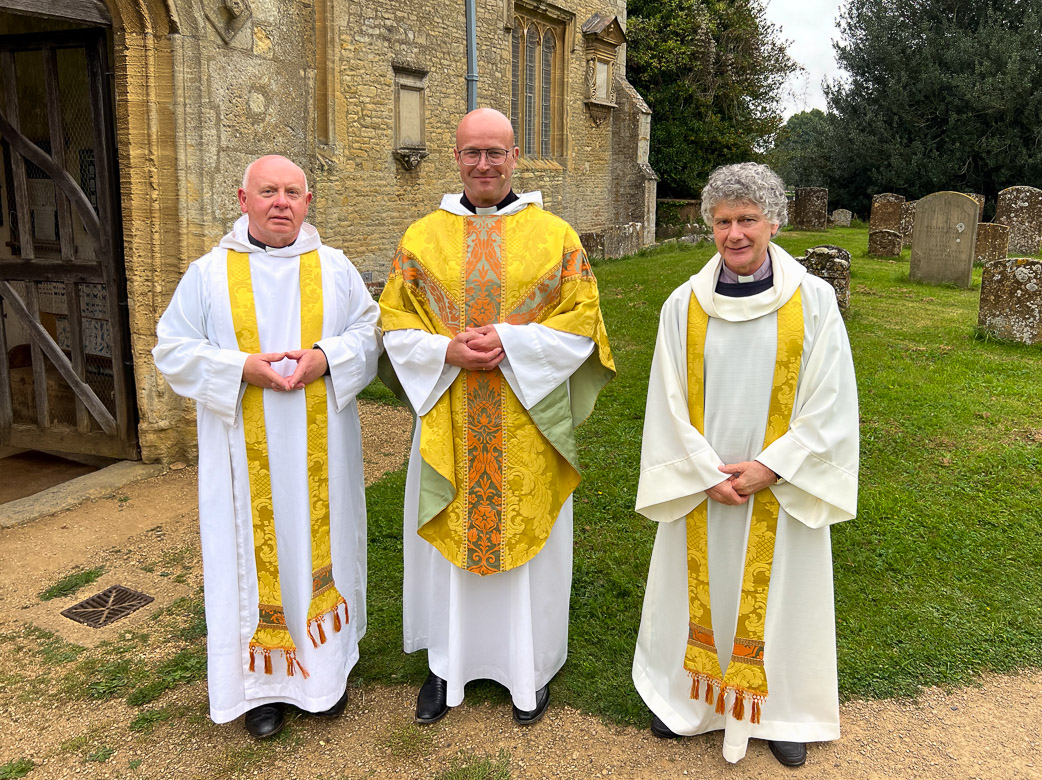
The Diocese of Oxford has a lively link with the Diocese of Växjö in Sweden. A group of parishes in the Anglican Church, known as the Akeman Benefice, has in turn a link with a parish in the Växjö diocese, the parish of Mönsterås & Fliseryd. Some parishioners from the Akeman Benefice visited their “twin parish” last year and this year it was time for a reciprocal visit. Not less than around 25 parishioners came to Oxford and Kirtlington and neigbouring churches to see and experience the Anglican Church in action.
They spent four days of learning Anglican theology and studying the pubs and visiting Oxford (I wonder what they thought was most enjoyable?). And on Sunday it was time for the Eucharist at St Mary the Virgin in Kirtlington and I paid them a visit as representative from the Council of Lutheran Churches.
Kirtlington was a most beautiful little village (or maybe town; after 40 years in England, I am still not sure if a place is a hamlet, a village, a town or a city) and I am happy I had time to stroll around. But the church itself was the most fascinating. It was built in 1147 (which for us Swedes is quite mind-boggling) on the grounds of an older Saxon Church. Above the door to the vestry is a stone with a crude carving of the Tree of Life, probably saved from the earlier Saxon Church (see image).

Magnus Johansson, the kyrkoherde (vicar) at Mönsterås & Fliseryd presided at the Eucharist and Gareth Miller, the Rector of the Aleman Benefice, was the host welcoming the Swedish contingent.



When I set in the nave and looked into the chancel I felt that it was a little out of line. Maybe 900 years ago they couldn’t build a church as straight as it should be? But when I asked I got a very interesting explanation:
Some very old churches were built out of line. it represents the idea of the church as the body of Christ. The ground plan of the church represents Jesus on the cross with the chancel as his head and the nave, where the congregation sits, as his body. And just as Jesus’s head is often depicted on the cross leaning towards one side, so the plan of the church is off in a similar way. You can clearly see that in some the illustrations I have included here.
Going from the nave to the chancel, you pass two valves before coming to the altar and the window behind the altar. But if you draw a line from the middle of the first valve through the middle of the second to the middle of the altar, you will find that the line isn’t straight but forms a zig-zag pattern. The head is leaning to one side.



At the end of the service Magnus said: “There are varieties of gifts, but the same Spirit; there are varieties of Service, but the same Lord and there are varieties of ministry, but the same God.” It was great to see people coming together although from different countries and different churches and to be part of this togetherness. But I couldn’t avoid thinking of all the times that religion has been an instrument of or an excuse for war instead of peace. How the Russian Orthodox Church is used as a weapon by Putin or how Sweden took part in the 30 year war between Protestants and Catholics. Lovely to celebrate unity instead of underflowing division.
